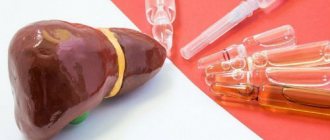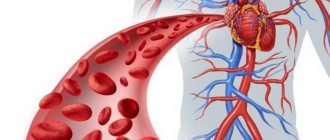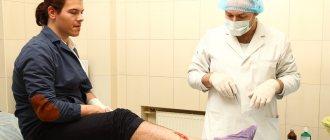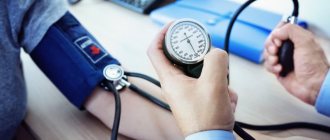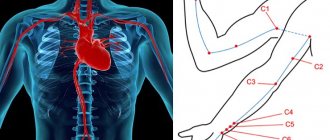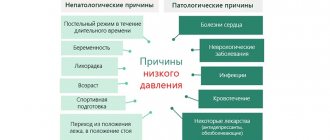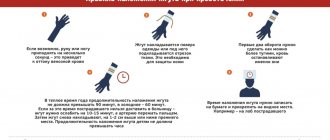UZ "Mogilev City Emergency Hospital"
1. What is Warfarin?
Warfarin belongs to a class of drugs known as anticoagulants. They reduce the blood's ability to form clots in blood vessels. For warfarin to help you, it must be taken correctly, with all the necessary precautions, and strictly following the instructions and advice of your doctor.
It is very important that you understand why you are taking this medicine and follow all your doctor's instructions.
The body functions normally if blood circulates freely through the vessels. Blood clots that interfere with its normal flow are called thrombi. Warfarin slows down the formation of blood clots. Blood clots can form anywhere in the body. During normal operation of the blood coagulation system, only when a blood vessel is damaged, a small clot forms, which stops the bleeding. But if blood clots form spontaneously in the bloodstream, this means that something has gone wrong in the coagulation system. The formation of blood clots is called thrombosis or thromboembolism.
Types of diseases.
This table shows where blood clots form and
| Thrombophlebitis | Blood clots in veins |
| Embolism | Blood clots moving through blood vessels |
| Venous thrombosis | Blood clots in the legs |
| Pulmonary embolism | Blood clots in the lungs |
| Stroke | Blood clots in the arteries of the brain |
| Atrial fibrillation | Irregular heartbeat, arrhythmia |
| Myocardial infarction | Blood clots in the arteries of the heart |
| Heart failure | Blood clots in the chambers of the heart |
2. Rules for taking warfarin.
- Take warfarin in the dose prescribed by your doctor at the same time. Do not double the dose if you miss a dose, as the risk of bleeding may increase.
- Warfarin is taken according to a specific regimen, selected individually for each patient by a doctor (daily, every other day, or according to another regimen).
You cannot change the order of taking Warfarin on your own.
- Follow the frequency of blood tests for INR recommended by your doctor to monitor the state of blood clotting. After each test, visit your doctor or contact him by phone.
- Use a Warfarin diary and write down each dose of the drug. The form for such a diary is located at the end of this brochure. In a notebook or notebook according to the proposed form, draw the corresponding columns. Show your diary at every doctor's visit.
- Store Warfarin in a cool, dark place and keep out of the reach of children.
- Do not store the medicine in the bathroom, near the kitchen sink, or other damp places. Warfarin can be spoiled by heat and moisture.
- Do not keep the medicine if it is expired or if you no longer take it.
3. WARNINGS.
3.1. Signs of a Warfarin overdose.
If you take Warfarin incorrectly or change your lifestyle, diet, or take other medications, signs of side effects or Warfarin overdose may appear.
If you have:
- bleeding gums when brushing teeth
- unexplained nosebleeds or bruising of the skin
- heavy bleeding from cuts, wounds, menstruation
- blood in urine or black (bloody) stool
- hemoptysis
- severe or prolonged pain
- joint pain, swelling or lumps
- bloody or dark-colored vomit
You need to see a doctor immediately.
3.2. Mode
Avoid vigorous sports, heavy lifting, or other activities that could cause falls or injuries.
Visiting the bathhouse (steam room), manual massage, Charcot shower is not recommended.
Eliminate alcohol, snacks and condiments containing vinegar from your diet.
Avoid exposure to the sun. Swimming in the pool, warm pearl baths, and terrincourt are allowed.
3.3 Be sure to tell your dentist, gynecologist and other doctors, especially if you are undergoing surgery, that you are taking Warfarin.
Some medicines can change (strengthen or weaken) the anticoagulant effect of Warfarin: this includes drugs that
that you buy without a prescription, including aspirin or headache medications, including fever reducers.
Do not take any of the following medications without consulting your doctor.
Medicines that enhance the activity of Warfarin:
- preparations containing aspirin (askofen, citramon, askaf, cardiomagnyl, etc.)
- medications used for arthritis, arthrosis: ibuprofen, indomethacin, naproxen, diclofenac, diclobern, voltaren, xefocam, ketorolac, etc.
- In addition, the following can enhance the anicoagulant effect of Warfarin: glibenclamide, thyroxine, ticlopidine.
Medicines that reduce the activity of Warfarin:
Barbiturates, antihistamines, haloperidol, oral contraceptives, antacids.
Therefore, do not take new or stop taking existing medications without talking to your doctor.
3.4 Diet
Always eat a balanced diet. Vitamin K, found in many foods, reduces the effect of Warfarin, and any changes in your daily diet may change the amount of this vitamin. It is best to keep the amount of vitamin K you receive constant. When you are taking Warfarin, it is especially important not to significantly change the amount of these foods in your daily diet.
A sufficient daily dose of vitamin K is 70-140 mg. If the patient eats large amounts of food high in vitamin K, this food will weaken the effect of Warfarin. A diet with a constant allowed amount of foods containing vitamin K is recommended.
Vitamin K content in the product
| Products | Vitamin K (mg/100g) | Vitamin K content |
| FRUITS | ||
| Applesauce | 2 | Low |
| Banana | 2 | Low |
| Orange | 1 | Low |
| Peach | 8 | Low |
| Raisin | 6 | Low |
| Strawberry | 10 | Low |
| FATS | ||
| Soybean oil | 193 | High |
| Corn oil | 3 | Low |
| Chicken eggs | 11 | Low |
| MEAT AND MEAT PRODUCTS | ||
| Beef liver | 92 | High |
| Bacon | 46 | Average |
| Chicken liver | 7 | Low |
| Ground beef | 7 | Low |
| Ham | 15 | Low |
| Pork liver | 25 | Low |
| Pork fillet | 11 | Low |
| MILK AND DAIRY PRODUCTS | ||
| Oil | 30 | Average |
| Cheese | 35 | Average |
| Cow's milk | 1 | Low |
| GREATS AND CEREALS | ||
| Bread | 4 | Low |
| Corn | 5 | Low |
| Oatmeal | 10 | Low |
| Rice | 3 | Low |
| Wheat flour | 4 | Low |
| Whole wheat grains | 17 | Low |
| BEVERAGES | ||
| Green tea | 712 | High |
| Coffee | 38 | Average |
| Black tea | — | Low |
| Cola | 2 | Low |
| VEGETABLES | ||
| Turnip greens | 650 | High |
| Spinach | 415 | High |
| Broccoli | 175 | High |
| Brussels sprouts | From 800 to 3000 | High |
| Cabbage | 125 | High |
| Cauliflower | 191 | High |
| Salad | 129 | High |
| Asparagus | 57 | Average |
| Green peas | 29 | Average |
| Green beans | 40 | Average |
| Watercress | 80 | Average |
| Tomatoes | 10 | Low |
| Pumpkin | 2 | Low |
| Potato | 1 | Low |
Warfarin
Monitoring
A prerequisite for therapy with Warfarin is the patient's strict adherence to the recommended dose of the drug.
The target INR value for oral anticoagulant therapy to prevent thromboembolic complications in patients with prosthetic heart valves is 2.5-3.0; for other indications - 2.0-3.0.
Patients suffering from alcoholism or dementia may be unable to adhere to the prescribed regimen of Warfarin.
Factors influencing the effect of warfarin
In conditions such as fever, hyperthyroidism, decompensated heart failure, alcoholism with concomitant liver damage, the effect of Warfarin may be enhanced. Increased effects of warfarin, requiring dose reduction, may also occur with weight loss, acute comorbidities, and smoking cessation.
The effect of warfarin may be reduced in hypothyroidism. A decrease in the effect of warfarin, requiring an increase in the dose of the drug, is possible with weight gain, as well as with diarrhea and vomiting.
Patients with a mutation of the gene encoding the CYP2C9 isoenzyme
Patients with a mutation in the gene encoding the CYP2C9 isoenzyme have a longer T1/2 of warfarin. These patients require lower doses of Warfarin, since the risk of bleeding increases when using normal therapeutic doses. If it is necessary to achieve a rapid antithrombotic effect, it is recommended to begin therapy with the administration of heparin; then, for 5-7 days, combination therapy with heparin and warfarin should be carried out until the target INR value is maintained for 2 days (see section "Dosage and Administration").
In the case of rare individual resistance to warfarin (extremely rare), 5-20 loading doses of Warfarin are required to achieve a therapeutic effect.
If the use of Warfarin in such patients is ineffective, other possible reasons should be identified, for example, concomitant use of other drugs (see section “Interaction with other drugs”), inadequate diet, laboratory errors.
Calciphylaxis
Calciphylaxis is a rare syndrome characterized by calcification of blood vessels with skin necrosis and is associated with high mortality. This complication is mainly observed in patients with end-stage renal disease on dialysis, or in patients with known risk factors such as protein C or S deficiency, hyperphosphatemia, hypercalcemia, or hypoalbuminemia. Rare cases of calciphylaxis have been described when taking warfarin in patients who do not have kidney disease. If calciphylaxis develops, appropriate treatment should be initiated and discontinuation of warfarin therapy should be considered.
Thrombophilia
Patients with protein C deficiency are at increased risk of developing skin necrosis when starting warfarin. In patients with protein C deficiency, treatment with warfarin should be initiated without a loading dose, even if heparin is used concomitantly. With protein S deficiency there is also a risk of skin necrosis, so it is advisable for such patients to start warfarin therapy with low doses.
Ischemic stroke
Anticoagulant therapy after ischemic stroke increases the risk of secondary hemorrhage in the necrotic area of the brain. In patients with atrial fibrillation, long-term use of warfarin is beneficial. However, the risk of early recurrence of embolism is low, so temporary cessation of therapy after an ischemic stroke is advisable. Warfarin treatment should be restarted 2 to 14 days after an ischemic stroke, depending on the size of the infarction and blood pressure. In patients with major embolic stroke or uncontrolled hypertension, warfarin should be discontinued for 14 days.
Surgical interventions
Surgeries not associated with the risk of severe bleeding can be performed with an INR < 2.5. If there is a risk of serious bleeding, warfarin should be discontinued 3 days before surgery. If it is necessary to continue anticoagulant therapy (for example, with a high risk of life-threatening thromboembolic complications), the INR should be reduced to <2.5 and heparin therapy should be started (see section "Dosage and Administration").
If surgery is necessary and warfarin cannot be stopped 3 days before surgery, the anticoagulant effect of warfarin should be stopped with low-dose vitamin K supplements.
The timing of resumption of warfarin therapy depends on the risk of postoperative bleeding. In most cases, warfarin can be restarted as soon as the patient can take the tablets by mouth.
Dental procedures
You should not stop taking warfarin before routine dental procedures (for example, before a tooth extraction).
Renal dysfunction
In chronic renal failure or nephrotic syndrome, the concentration of the free fraction of warfarin in the blood plasma increases, which, depending on concomitant diseases, can lead to either an increase or decrease in the effect. In cases of moderate renal failure, the effect of warfarin is enhanced. Caution is recommended when using warfarin in patients with impaired renal function. In all of the above conditions, careful monitoring of INR values should be carried out.
Thyroid diseases
The rate of warfarin metabolism depends on the functional state of the thyroid gland. Therefore, patients with hyper- or hypothyroidism require careful monitoring when initiating warfarin therapy.
Elderly patients
Treatment of elderly patients should be carried out with caution, because the synthesis of blood coagulation factors and hepatic metabolism in such patients is reduced, as a result of which the effect of warfarin may be enhanced.
Use (effect) of warfarin, dose, overdose
The body needs vitamin K to ensure blood clotting.
A person gets vitamin K from food, mainly from vegetables. Vitamin K can also be produced in the human intestine by special intestinal bacteria. From the intestines, vitamin K is absorbed into the blood and goes to the liver, the “laboratory” of the body. In the liver, with the participation of vitamin K, blood clotting factors necessary for the formation of a blood clot (thrombus) are synthesized. These are prothrombin (factor II), factors VII, IX and X. They are called “vitamin K-dependent factors”.
The action of warfarin is to reduce the formation of vitamin K-dependent factors. As long as warfarin is regularly injected into your body, your blood's clotting time is prolonged and this prevents blood clots from forming. There is also a risk of bleeding if the dose of the drug is excessive.
The effect of warfarin on blood clotting varies from person to person.
Therefore, each patient receives his own, individually selected dose. To achieve the desired effect, a minimum of 4-5 days is required, often dose selection lasts up to 2-3 weeks. Prescription of the drug and further monitoring are carried out using the determination of INR. The daily dose of warfarin is taken orally once a day, in the evening (at 18.00-19.00 hours); if necessary, the tablet or part of it can be chewed and washed down with water.
What should you tell your doctor about if you start taking warfarin or are already being treated with it?
About all problems associated with bleeding or its risk (stomach or duodenal ulcers, colon; hemorrhoidal bleeding; heavy menstruation), liver and kidney diseases, high blood pressure and diabetes. Very important if you are planning a pregnancy or are already pregnant. Warfarin has a teratogenic effect. This means that taking it can lead to various deformities in the fetus (if taken in the first trimester of pregnancy) or to intrauterine bleeding (in later stages). Therefore, women whose pregnancy occurred while taking warfarin are recommended to terminate it.
Can warfarin cause kidney damage?
Often, for heart problems, cardiologists prescribe warfarin to patients.
However, the instructions for this medicine say that it can cause kidney damage. What should I do? Anticoagulants are drugs whose effects on the body reduce blood clotting and prevent the formation of blood clots. To avoid or minimize the consequences of thrombotic complications, it is necessary to reduce coagulation, and it is in such cases that anticoagulants are used.
The coagulation system is multicomponent and depends on many components. However, the synthesis of a number of factors is associated with the influence of vitamin K (clotting factor). Warfarin interferes with the action of this vitamin, thereby preventing the formation of blood clots. The patient taking it is constantly balancing between an insufficient dose of the drug, when thrombotic complications may develop, and an excessive decrease in coagulation, when the risk of bleeding increases. Staying safely within an acceptable “corridor” requires careful and regular monitoring of clotting.
The INR (international normalized ratio) indicator, which comprehensively evaluates the body's self-regulation system, is currently chosen as a laboratory parameter controlled throughout the world. The level of clotting may fluctuate even with a constant dose of the drug. The body's susceptibility to the action of anticoagulants depends on many things - nutrition, physical activity, concomitant diseases, the functional state of the liver and kidneys, and the treatment received. Currently, there are anticoagulants that do not require constant monitoring of clotting. However, taking any drugs in this group can cause damage to internal organs, including the kidneys. Therefore, such serious drugs are prescribed according to strict indications, and the doctor will weigh the pros and cons many times.
Kidney damage usually occurs in patients with concomitant damage as a result of diabetes mellitus, heart failure, arterial hypertension or glomerulonephritis. Damage is also possible with an overdose of such drugs. In this case, microhemorrhages occur in the kidneys, ultimately leading to a decrease in their function.
According to statistics, this problem occurs much more often in the first two months after starting to take the drug, in fact, when selecting its stable dose. Therefore, during this period it is very important to monitor your health, take tests on the doctor’s recommendation and make the necessary adjustments if something goes wrong. To avoid adverse consequences, you must strictly follow the doctor’s instructions, follow the dosage and rules of administration. Patients taking anticoagulants should keep a diary, recording the dose of the drug, the INR level and the date of its determination. And, of course, it is important to periodically undergo examination by a nephrologist or urologist.
Yuri KUZMENKOV , doctor, Republican Scientific and Practical Center “Cardiology”.
The doctor's areas of interest are therapy, cardiology, endocrinology.
We are waiting for your questions, friends!
Blood INR - what is the norm?
How do doctors determine blood's ability to clot?
To do this, a blood test is performed - prothrombin time. Previously, doctors received the result of this analysis in the form of prothrombin index (PTI). Currently, all over the world, the laboratory produces the result of a prothrombin time study in the form of INR - international normalized ratio. All healthy people not receiving warfarin have an INR within one (0.9-1.1). As blood clotting time increases, the INR value increases. For example, to prevent thrombosis in chronic atrial fibrillation, it is necessary to lengthen the coagulation time by 2-3 times. In this case, the INR should be within the therapeutic range of 2.0-3.0. When implanting artificial heart valves, the interval shifts towards greater “thinning” of the blood - from 2.5 to 3.5. Your doctor will tell you what INR goals you need to adhere to.
Frequently asked questions about warfarin treatment
1. Why is warfarin prescribed?
Warfarin is an anticoagulant - a drug that reduces blood clotting (the ability to form blood clots). Warfarin is prescribed in cases where the risk of unwanted blood clots is particularly high. The most common indications for prescribing warfarin: artificial heart valve, atrial fibrillation (the so-called “atrial fibrillation”), deep vein thrombosis, pulmonary embolism, sometimes after a heart attack, stroke, with thrombophilia (a disease in which blood clotting is increased and constantly appears). blood clots).
2. How does warfarin work?
Warfarin blocks part of vitamin K, from which prothrombin is synthesized in the liver, a substance necessary for the formation of blood clots. Vitamin K enters the body with food from green vegetables, and is also produced by bacteria living in the human intestines. Warfarin “neutralizes” part of vitamin K and the liver does not receive enough “building material” to create prothrombin. Warfarin does not dissolve existing blood clots.
3. How quickly does warfarin start and stop working after taking it?
Since warfarin interferes with the creation of new prothrombin without neutralizing the one already formed, its effect does not appear immediately. The effect of warfarin can be seen only in 3-5 days (when the previously created prothrombin is destroyed). It also takes 3-5-7 days for the liver to produce a sufficient amount of prothrombin after stopping warfarin, and blood clotting returns to normal.
4. Is warfarin dangerous? Will I have any side effects?
Warfarin is a serious drug. Failure to follow the rules for taking it can lead to serious complications. At the same time, when prescribing it, the doctor weighed the possible risks of warfarin and the risks without it, and came to the conclusion that there would be more benefit from warfarin than danger. In general, following the rules for taking warfarin and regularly monitoring blood clotting, in most cases, allows you to avoid serious complications.
5. When should you take warfarin?
The main condition is that warfarin must be taken every day, without skipping. Therefore, determine the time for taking warfarin for yourself when you will not forget to take it! In addition, you should always take warfarin at the same time and on an empty stomach. Food affects the absorption of warfarin, so it is better not to combine them. It is best to take warfarin once a day in the evening.
6. How long will I have to take warfarin?
This depends on the reason you were prescribed warfarin. For example, after installation of an artificial mechanical heart valve or with thrombophilia, warfarin will have to be taken for life. After some other heart surgeries or deep vein thrombosis, warfarin is usually prescribed for six months to a year.
7. What should I do if I forget to take warfarin?
Don't forget to take your next dose :). Under no circumstances take a double dose at your next dose! Just wait until your next dose and take your regular dose for that day.
8. I don't remember if I took warfarin. What should I do?
Nothing. If you skip one dose, there will be less harm than if you take a double dose. And in order to prevent this situation from happening again, use a pill bottle or put warfarin and other medications aside for the day in a separate box/jar. This way you will always know what you have already drunk and what you haven’t yet.
9. Should I somehow monitor the progress of warfarin treatment?
Yes, monitoring the progress of treatment is the basis of all basics. If you are not going to control your blood clotting, it is best not to start warfarin therapy at all. Treatment with warfarin is a constant balancing act between the risk of thrombosis and the risk of bleeding. And without regular tests it is impossible to maintain this balance.
About INR
10. What is INR?
INR (international normalized ratio) is one of the indicators of the blood coagulation system. It is sometimes referred to as “INR” in analyses. It is by this indicator that the effectiveness of warfarin treatment is determined.
11. What is the “target INR range”?
The normal INR for humans is about 1 (0.8 – 1.3). The purpose of prescribing warfarin is to reduce blood clotting to a level where the risk of thrombosis is significantly reduced, but the risk of bleeding is not yet too high. For different conditions, this balance point is between certain INR numbers. For example, with a mechanical heart valve, it is recommended to keep the INR between 2.5 and 3.5. These numbers are called the “target INR range”. This range may be different for different conditions.
12. How often should I check my INR?
At the stage of selecting the dose of warfarin, INR should be monitored every 3-5 days, after reaching the target range - once every 5-7 days, after receiving 3 consecutive tests in the target range, you can switch to measuring once every two weeks. In general, it is necessary to measure INR at least once a month, and preferably once a week or two. It is also necessary to check the INR if you change the dose of warfarin, change your diet, add new medications and other situations that could affect blood clotting. Remember that changes in INR levels will only be noticeable after 3-5-7 days.
13. What does it mean if my INR is BELOW the target range? What to do about it?
This means that the dose of warfarin is insufficient and there is a risk of thrombosis. In order to return to the range, you need to either reduce the amount of vitamin K in food or increase the dose of warfarin. It's better to start with the first one. If the INR has dropped below 1.6 (for a target range of 2.0-3.0) or 2.0 (for a target range of 2.5-3.5), you may need to temporarily add heparin or Clexane (ask your doctor!) .
14. What does it mean if my INR is ABOVE the target range? What to do about it?
This means that the dose of warfarin is excessive and the risk of bleeding is increased. It is necessary to either increase the intake of vitamin K from food or reduce the dose of warfarin. If the INR is no more than 4.0-4.5, then it is better to start with the first option. And only if the INR does not decline within a week, then reduce the dose of warfarin.
15. I can't seem to stay within my target range. Is it even possible?!
Maybe! It just takes time to learn how to regulate blood clotting. For this:
A. Monitor your INR regularly
b. Stick to a diet (see below)
V. To more accurately select the dose of warfarin, use combinations of tablets with different warfarin contents (2.5, 3 and 5 mg are available in Ukraine) and their parts.
d. Use an alternating regimen for taking warfarin: one dose one day, another - another, the third - the same as the first, etc. In this way, you can select the average daily dose more accurately.
d. Don't forget about the interactions of warfarin with medications, herbs, vitamins and foods!
e. Change the dose of warfarin very carefully, by 10-20% at a time and allow time for changes to appear (5-7 days).
16. For several tests in a row, my INR has been in the target range. Does this mean that the warfarin dose has been adjusted and I can stop checking my INR?
No, it doesn't mean that. INR monitoring is necessary while you are taking warfarin because clotting can vary significantly depending on external factors (food, medications, stress, etc.). Even if the indicator is stable, it is necessary to monitor the INR once a week or two and in no case less than once a month!
17. In what situations do I need an unscheduled INR check?
If there is reason to suspect or predict an exit from the target range. For example, if unmotivated large bruises appeared on the body, nosebleeds or other bleeding appeared. An unscheduled INR measurement is also necessary if your diet has changed radically or you have added/removed some medication that can affect the INR.
About lifestyle
18. Can I combine warfarin with other medications?
You can, but your warfarin dose may need to be adjusted. There is a whole list of drugs that enhance the effect of warfarin and no less those that weaken its effect. Always pay attention to the “drug interactions” section in the medication annotations and if warfarin is indicated there, be sure to check the INR 5 days after starting the drug and possibly change the warfarin dose. Don't forget to check your INR and return to your original warfarin dose after you finish taking the new drug.
19. I periodically take herbs/vitamins/dietary supplements. Could this have any effect on warfarin?
Maybe! Many vitamins (eg vitamin C, vitamin E) affect the action of warfarin. Many multivitamins contain small amounts of vitamin K, which means they significantly reduce the effect of warfarin. When choosing multivitamins, pay attention to this; take those that do not contain vitamin K. The same applies to many herbs and dietary supplements. Before taking them, think carefully about whether the expected benefit from taking them is so great as to risk “shaking” the INR. And if you still decide to take herbs/vitamins/dietary supplements, be sure to check your INR 5-7 days after they start and after they end.
20. Do I have to follow any special diet while taking warfarin?
Yes, there are certain dietary rules for people taking warfarin. They consist in the fact that there should be a stable content of vitamin K in food every day. It can be high or low, it doesn’t matter, the main thing is that it is approximately the same every day! Green vegetables and green tea contain the most vitamin K.
21. Should I change my lifestyle if I take warfarin?
Sometimes yes. To avoid dangerous bleeding, you should avoid activities and entertainment that involve an increased risk of injury (contact sports, working with cutting objects, or with a high risk of falling, even from your own height).
22. I want to go on a trip/hiking. Will warfarin therapy interfere with this?
Basically no. Just remember to take an adequate supply of warfarin with you and check your INR before leaving. Don't forget about your diet - when traveling, food often differs significantly from usual, and this can affect the INR. It is better to avoid long (more than 2 weeks) trips unless there is an opportunity to check the INR (with a portable device or at the nearest hospital). Also, always have a card/piece of paper with you indicating that you are taking warfarin and for what indications.
23. I want to get pregnant and have a baby. Would warfarin interfere with this?
Unfortunately it will interfere. Warfarin is extremely harmful to the baby, so if you are planning a pregnancy, discuss with your doctor the possibility of replacing warfarin with heparin during pregnancy.
24. Should I tell doctors that I am taking warfarin?
Yes, it is necessary, since many manipulations cannot be carried out with warfarin or require special training or support. Be prepared for the fact that doctors in some specialties may not know what warfarin is and what risks it carries, so it is better to have the instructions for the drug with you.
25. I am about to have an operation or other medical procedure. What to do with warfarin?
It all depends on how traumatic the manipulation is. For any operation, warfarin will have to be temporarily removed, perhaps replaced with heparin for a while. The same applies to such manipulations as gastroscopy, bronchoscopy, etc. Tooth extraction may require a dose reduction or discontinuation of warfarin. Other dental manipulations can be carried out without changing the dose of warfarin, but you should be prepared for prolonged bleeding from the gums, etc.
26. In what situations should I consult a doctor immediately?
a. If you have had an injury to the abdomen, chest, or head. Even if you feel well, but the blow can be described as severe, it is better to go to the hospital and make sure that there is no internal bleeding.
b. If you notice blood in your sputum, stool, urine, or if you are vomiting blood. You should also consult a doctor if you have nosebleeds that do not stop within 10-15 minutes.
c. If you have numerous large bruises on your body.
d. If you suddenly have headaches, weakness in one half of the body, blurred vision, speech impairment, abdominal pain, etc.
In each of these cases, be sure to tell your doctor that you are taking warfarin and your latest INR value.
27. Can I combine warfarin with alcohol?
You can, but it is not advisable to do so. Alcohol, by affecting the liver, enhances the effect of warfarin. In addition, even small doses of alcohol impair coordination and increase the risk of accidental injury, which can be life-threatening in a person taking warfarin.
TO MAKE AN APPOINTMENT WITH A SPECIALIST AT OUR MEDICAL CENTER, PLEASE CLICK HERE
Warfarin is the basis of modern anticoagulant therapy in the clinic of internal medicine
About the article
9400
0
Regular issues of "RMZh" No. 18 dated 08/19/2009 p. 1118
Category: Cardiology
Authors: Preobrazhensky D.V. , Batyraliev T.A. , Vyshinskaya I.D.
For quotation:
Preobrazhensky D.V., Batyraliev T.A., Vyshinskaya I.D. Warfarin is the basis of modern anticoagulant therapy in the clinic of internal medicine. RMJ. 2009;18:1118.
As often happens in science, the discovery of Warfarin was the result of a chain of accidents that are not directly related to medicine. At the beginning of the twentieth century, a new disease in cattle was noted in North America, which manifested itself as severe bleeding, sometimes developing spontaneously, but more often after injury. Low levels of prothrombin were found in sick cows. In 1924, Canadian veterinarian F. Schofield established a connection between bleeding in cows and the use of moldy clover as feed. In 1939, K. Link et al. isolated the first substance of the coumarin series - 3,3'-methyl-bis-4-hydroxycoumarin (dicoumarin, or dicumarol), which caused the so-called “sweet clover disease” in cows. In 1940, dicumarol was synthesized, and in 1941, it was studied in humans for the first time. Since then, hundreds of dicoumarol derivatives have been synthesized, some of which are widely used as rat poisons. In 1947, dicoumarol was first used as a drug to treat myocardial infarction.
Various coumarin derivatives have similar pharmacological properties, being competitive antagonists of vitamin K, but only a few of them are used in clinical practice. Along with coumarins, indanedione derivatives, which include phenindione, diphenindione, anisindione and chlorphenindione, also have properties as competitive antagonists of vitamin K. Thus, among competitive vitamin K antagonists (or indirect anticoagulants), two main groups of drugs are distinguished - coumarin derivatives and indandione derivatives, which have been widely used since the 50s of the 20th century for the treatment and prevention of thrombosis. During this time, undoubted advantages of coumarins over indanedione derivatives were discovered: they are less likely to cause allergic reactions and provide a more stable anticoagulant effect. For this reason, indanedione derivatives have practically ceased to be used in clinical practice. In recent years, in the United States and many other countries around the world, the drug of choice for oral anticoagulant therapy has been Warfarin. Basic clinical pharmacology of Warfarin and other indirect anticoagulants Warfarin is almost always prescribed orally, although injectable forms of the drug are available. After oral administration, Warfarin is quickly and completely absorbed from the gastrointestinal tract. Maximum concentrations of the drug in blood plasma in healthy individuals are detected after 60–90 minutes. The half-life of Warfarin in blood plasma ranges from 36 to 44 hours. Warfarin is almost entirely bound to plasma proteins, and only 1–3% of free Warfarin acts in the liver as a competitive antagonist of vitamin K. The anticoagulant effect of Warfarin appears within 24 hours after oral administration, but reaches a maximum after approximately 36 hours and lasts up to 4–5 days. Warfarin and other indirect anticoagulants inhibit the synthesis (or, more correctly, activation) in the liver of vitamin K-dependent coagulation factors, which include factors II (prothrombin), VII, IX and X and anticoagulant proteins C, S and Z. Onset of anticoagulant action Warfarin and other indirect anticoagulants depend on the rate of disappearance of active forms of coagulation factors from the blood, the synthesis of which stops after taking the drugs. The disappearance of these factors directly depends on their half-life in the blood plasma: factor VII and protein C (6–7 hours), factor IX and X (24 hours), protein S (30 hours), factor II (90 hours). Effective anticoagulation requires a reduction in active forms of coagulation factors by at least 20% of normal. Meanwhile, 24 hours after taking Warfarin, levels of active forms of factor VII and protein C will be about 20% of normal, but factor II (prothrombin) will not decrease to this level for 1-2 weeks. This means that Warfarin should be classified as a slow-acting indirect anticoagulant. To assess the anticoagulant effect of Warfarin, the prothrombin time is determined by the levels of the active forms of factors II, V, VII and X. Although the level of factor IX is not measured, it usually decreases in parallel with the level of factor X. Clinical and laboratory studies have shown that the prolongation of prothrombin time time 1.5–2 times higher than normal values prevents the growth of a blood clot. It is generally accepted that to prevent venous thrombosis, prothrombin time must be increased by 1.5–2 times, and to prevent arterial thrombosis – by 2.5–4.5 times [1–4]. To standardize the results of determining prothrombin time obtained in different laboratories and using different types of thromboplastin, WHO (1983) recommended the use of the international normalized ratio (INR), which takes into account the effect of the thromboplastin used on the value of the prothrombin time determined in a given laboratory. Therefore, at present, when treating with indirect anticoagulants, target values are indicated not for prothrombin time, but for INR. In the vast majority of clinical situations, it is recommended to maintain the INR in the range of 2.0 to 3.0. In patients with mechanical prosthetic heart valves, INR values are recommended to be maintained within 2.5–3.5. In the past, INR values of 3.0 to 4.5 were acceptable for cases of recurrent pulmonary embolism (PE), but these values are not currently considered safe. In case of recurrent pulmonary embolism despite anticoagulant therapy, an INR value of about 3.0 is recommended in combination with 80–100 mg of acetylsalicylic acid (ASA) per day. Thus, at present, from the point of view of the effectiveness and safety of anticoagulant therapy, in most cases, INR values from 2.0 to 3.0 are considered optimal. Therapeutic use of Warfarin The main indications for the use of Warfarin and other indirect anticoagulants include the treatment and prevention of thromboembolic complications (including PE and systemic embolism) in patients with acute venous thrombosis, mechanical prosthetic heart valves, and especially atrial fibrillation (AF) [1,4,5 ]. Venous thrombosis can occur in any vein, but venous thrombosis in the proximal deep veins of the lower extremities and pelvic veins are of greatest clinical importance. Venous thrombosis of this location is especially often the source of pulmonary embolism, which, if left untreated, leads to death in 10% of cases. Inadequate treatment of proximal venous thrombosis is associated with a high risk (20–50%) of recurrent venous pulmonary embolism. Treatment of venous thrombosis and pulmonary embolism begins with heparin therapy. However, after 5–10 days of heparin, it is recommended to prescribe Warfarin for the purpose of secondary prevention of recurrent thrombosis. In order for the anticoagulant effect of Warfarin to occur, it should be prescribed 3-5 days before discontinuation of heparin. The duration of warfarin therapy depends on the clinical situation and is usually 3 to 4 months, although in some cases longer anticoagulant therapy is required. Lifelong anticoagulant therapy is sometimes required. A number of controlled studies have assessed the prophylactic effectiveness of antithrombotic drugs in surgical patients at high risk of developing venous thrombosis and pulmonary embolism. The greatest reduction in the risk of venous thrombosis and pulmonary embolism was observed when combined anticoagulant therapy was prescribed (heparin followed by switching to warfarin). The risk of venous thrombosis decreased by 25–55%, and fatal pulmonary embolism by 5–8 times. A randomized study by the British Thoracic Society (1992) showed that the incidence of recurrent deep vein thrombosis of the lower extremities decreases with increasing duration of anticoagulant therapy. Thus, the incidence of thrombosis was 7.8% with 4-week therapy, but only 4.0% with 3-month therapy (p = 0.04). Other investigators have also reported a significant reduction in the risk of venous thrombosis when anticoagulant therapy was extended from 6 weeks to 6 months or from 3 months to 1 to 2 years. On the other hand, after discontinuation of Warfarin, the risk of recurrent venous thrombosis is up to 5% per year after long-term anticoagulant therapy. Therefore, after long-term anticoagulant therapy, in order to prevent relapses of thrombosis, it is better not to cancel Warfarin, but to switch to less intensive therapy (from INR 2.0–3.0 to 1.5–2.0) [1,4,5]. Prosthetic heart valves. Currently, three approaches to the treatment of heart valve defects are used: valve plastic surgery, implantation of a bioprosthetic valve, and implantation of mechanical prostheses. Anticoagulant therapy varies among patients with different types of prostheses. After valve surgery or implantation of a bioprosthesis, Warfarin is usually prescribed for 3 months. Longer anticoagulant therapy is required if the patient has left atrial thrombosis (3 to 6 months) or systemic thromboembolism (3 to 12 months). If systemic thromboembolism recurs despite anticoagulant therapy, warfarin therapy should continue for at least 12 months (in addition, it is recommended to add 80–100 mg of ASA or 75 clopidogrel per day to Warfarin). With a permanent form of MP, therapy with Warfarin continues indefinitely. The situation is different in patients with mechanical prosthetic heart valves. After implantation of a mechanical prosthetic heart valve, lifelong and more intensive anticoagulant therapy is required - target INR values of 3.0 (or from 2.5 to 3.5) or 2.5 (or from 2.0 to 3.0) in combination with 80 –100 mg ASA per day [4,5]. Atrial fibrillation is the most common arrhythmia. Its prevalence reaches 5% among people over 65 years of age. In patients with CHF, the frequency of MP ranges from 10 to 50%, depending on the severity of the disease. Several epidemiological studies have shown that, regardless of other factors, MP doubles the risk of developing a cerebral stroke and that the risk of developing a stroke in patients with non-rheumatic MP is 2.3-6.9% per year. The risk of stroke associated with MP increases with age. The annual risk is 1.5% among those aged 50–59 years, but increases to 23.5% among those aged 80–89 years. In addition to age, risk factors for the development of cerebral stroke in patients with MP are arterial hypertension, diabetes mellitus, a history of cerebrovascular accident, congestive chronic heart failure (CHF) or left ventricular dysfunction, coronary heart disease, rheumatic heart disease, thyrotoxicosis, as well as female floor. Given the increased risk of stroke, all patients with MP should receive antithrombotic therapy. Patients no older than 60–65 years and without other high risk factors for stroke should receive ASA (325 mg/day). All other patients belong to groups of intermediate or high risk of developing a cerebral stroke and should receive indirect anticoagulants and, first of all, Warfarin. Target INR values should be 2.0–3.0 in most cases. In patients with rheumatic heart disease, a history of thromboembolism, or an atrial thrombus on transesophageal echocardiography, higher INR values (2.5–3.5) are recommended. Recently, data from a meta-analysis of the results of 29 randomized trials were published that examined the effectiveness and safety of antithrombotic drugs in patients with MP [6]. According to summary data from placebo-controlled studies, in patients with MP, indirect anticoagulants (in most cases, Warfarin) reduce the risk of stroke by an average of 64% (95% confidence interval from 49 to 74%), while ASA reduces it only by 22% (95% confidence interval 2 to 39%). In comparative studies, the incidence of stroke in patients with MP receiving Warfarin was 34% lower than in those receiving ASA (95% confidence interval 18 to 52%). Warfarin is significantly more effective than clopidogrel and ximelagatran. Anticoagulant therapy with Warfarin is associated with an increase in the absolute risk of serious bleeding (up to 0.3% per year). If an episode of MP lasts more than 48–72 hours, then patients should receive warfarin for at least 3–4 weeks before pharmacological or electrical cardioversion. After successful cardioversion, anticoagulant therapy is continued for another 3–4 weeks. Taking into account the risk of hemorrhagic complications, Warfarin is recommended for patients with both permanent and paroxysmal forms of MP, given the high risk of stroke in both forms of the disease. The high risk of stroke in patients with MP persists even after restoration of sinus rhythm. This is explained by the fact that even after restoration of sinus rhythm, it persists for 1 year in no more than 30–50% of patients with MP. However, the question of prescribing Warfarin to patients with MP during sinus rhythm remains open [1,6,7]. In the 80s and 90s of the last century, before the widespread use of thrombolytic agents, several placebo- and ASA-controlled studies were performed to study the effectiveness and safety of Warfarin in patients who had suffered an acute myocardial infarction (MI). In placebo-controlled studies, warfarin significantly reduced mortality, the risk of recurrent myocardial infarction and thromboembolic stroke, but significantly increased the risk of hemorrhagic complications (Sixty Plus Reinfarction Research Group, 1980; APRICOT, 1993; WARIS, 1992; ASPECT, 1994). After thrombolytic therapy in post-MI patients, Warfarin was less effective than ASA (APRICOT, 1993; CARS, 1997). A number of more recent studies have shown that Warfarin, in combination with or without ASA, is more effective in preventing ischemic complications after MI than ASA alone (160 mg/day), although at the expense of a higher incidence of hemorrhagic complications (ASPECT-2, 2002; WARIS–II, 2002) [8]. In the 5-year WARSS study (2001), Warfarin did not reduce the risk of recurrent ischemic stroke in patients with cerebral infarction compared to ASA (325 mg/day). Therefore, as a means of secondary prevention after MI or ischemic stroke, Warfarin is recommended only in selected cases when the possible benefit significantly outweighs the risk of hemorrhagic complications, for example, in cases of recurrent MI or stroke on the background of safer antiplatelet drugs (ASA or clopidogrel), as well as in special cases (for example, with MP or the presence of a mural thrombus in the left ventricle). In the WASH study (2004), Warfarin did not prevent thromboembolic complications in patients with CHF and mainly in sinus rhythm. In patients with CHF and MP, Warfarin is still the drug of choice [5]. Thus, Warfarin is an indirect anticoagulant that provides a lasting antithrombotic effect and is less toxic than other drugs. Warfarin is the most studied among indirect anticoagulants. Its high effectiveness as a means for the secondary prevention of venous thrombosis and pulmonary embolism, as well as a means for the prevention of cerebral stroke and systemic embolism, has been proven in patients with MP. Warfarin is indicated in the first 3 months after implantation of a bioprosthetic heart valve and is prescribed for life to patients with mechanical prosthetic heart valves. If refractory, warfarin may be useful for secondary prevention after acute MI or stroke. Literature 1. Sidorenko B.A., Preobrazhensky D.V. Clinical use of antithrombotic drugs. – M., 1998. 2. Majerus PW, Tollefsen DM Blood coagulation and anticoagulant, thrombolytic, and antiplatelet drugs. In: Goodman&Gilman The pharmacological basis of therapeutics. 11th edition. – New York., 2006. – pp. 1467–1488. 3. Ansell J., Poller L., Bussey H. et al. The pharmacology and management of the vitamin K antagonists. – Chest, 20043; 126:204S–2333S. 4. Genton EE Warfarin. In: Messerli F. (ed.) Cardiovascular drug therapy. 1st edition. – Philadelphia, 1996. – pp. 1517-1521. 5. Becker RC, Fintel DJ, Green D. Antithrombotic therapy. 4th edition. – New York, 2006. 6. Hart RG, Pearce LA, Aguilar MI Meta-analysis: Antithrombotic therapy to prevent stroke in patients who have nonvalvular atrial fibrillation. – Ann. Intern Med., 2007; 146:857–867. 7. Preobrazhensky D.V., Sidorenko B.A. Drug treatment of atrial fibrillation. – Moscow, 2003. 8. Bhatt DL, Newby LK Post-myocardial infarction management. – In: Topol EJ (ed.) Textbook of cardiovascular medicine. 3d edition. – Philadelphia, 2007. – pp. 327–345.
Content is licensed under a Creative Commons Attribution 4.0 International License.
Share the article on social networks
Recommend the article to your colleagues

